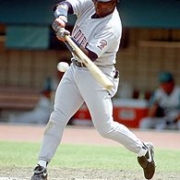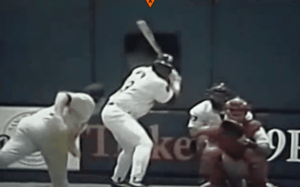In this Tony Gwynn thought experiment, discover how to hit inside and outside pitches, increase hitting power, and teach a kid to hit the ball further. Interesting quick facts about Tony Gwynn’s life and career:
- October 7, 2001: Rickey Henderson records 3,000th hit in Tony Gwynn’s final game – Society for American Baseball Research.
- Here’s a great spray chart of Gwynn’s last two years.
- Gwynn died of salivary gland cancer in 2014 at the age of 54 according to Wikipedia.
- Career batting average is: .338 and highest batting average: .394 in the strike shortened year of 1994.
- Height and weight: 5′ 11″, Weight 225 lbs.
- Tony had 8 batting titles in total.
Tony Gwynn Hitting Video, It’s Never Too Late!
Baseball lost one of the hardest working hitters EVER. In this video blog, I want to answer the question of why Tony Gwynn couldn’t hit for repeatable power. I’m keying in on a two interesting points mentioned in an article at Deadspin.com, “How Tony Gwynn Cracked Baseball’s Code And Became A Legend“, after his passing. We’ll talk about:
- How baseball history is made on the inside pitch,
- How the front shoulder is crucial to repeatable power, and
- Why Mr. Padre’s swing didn’t have built-in power.
How Baseball History is Made on the Inside Pitch
The Deadspin.com article mentioned a 1992 All-Star game conversation Tony Gwynn had with Ted Williams about how Williams preached that baseball history was made on the inside pitch. Quoted from the Deadspin article:
“The year before Williams offered his counsel, Gwynn hit .315 on pulled balls; the year after, .587. And in the five years following it, he hit .368, won four batting titles, and made a very serious run at being the first hitter since Williams to hit .400, which he may have done if not for the 1994 strike.”
Increased average, check! But, according to Baseball-Reference.com, over his 20 year career Tony Gwynn only hit over 10 home runs five times in a season. Although, four-out-of-five of those seasons were after the Ted Williams conversation. His career high was 17, in 1997. In the video, I offer an explanation of why it wasn’t too late for Gwynn to develop power after that Williams conversation.
SCIENCE-BASED TRAINING:
Improve your hitting strategy dramatically by applying human movement principles.
Learn not only how and what to train but also the science behind the methods.
Front Shoulder Crucial to Repeatable Power
The last point, mentioned in the Deadspin article, was in a conversation George Will had with Tony Gwynn in his book Men At Work, where Gwynn explains – during video analysis of his swing – if he was “staying on the ball”:
To know if he is swinging correctly, he counts the frames from when the pitcher lets go of the ball until his, Gwynn’s, front shoulder “opens up”—turns to the right…There’s one… two… three… four… five… six… seven… eight… nine… ten… There,” he says with satisfaction at the high count, “ten frames. That means I’m staying on the ball. I’m keeping my front shoulder in and staying back. If I open it up before then, I’m through, I’m out in front.”
How interesting. Mr. Padre may have been ahead of his time here. In the coming swing breakdown, you’ll discover how to not lose the repeatable power opportunity that Tony Gwynn did.
Why Tony Gwynn’s Swing DID NOT Have Power Built-In
What I reveal in the video, is proven human movement science. I’m standing on the shoulders of giants, body workers like Ida Rolf, Judith Aston, Thomas Myers, and Dr. Erik Dalton. I borrow from Dr. Serge Gracovetsky and his theory on Spinal Engine mechanics, and Dr. Kelly Starrett’s work in optimizing human movement.
Nowadays, we have a solid framework for producing power in the body through dynamic movement without having to worry about this hitting theory or that. Here are my top THREE fixes that would have built repeatable power into Tony Gwynn’s already consistent swing:
- Down shoulder angle (spinal engine mechanics)
- Hiding hands from the pitcher (loading springy connective tissue in the torso), and
- Better spine angle at and after contact (pictured to the right, spine is too vertical).
My family’s thoughts and prayers go out to his family. We lost a good hard working man.





